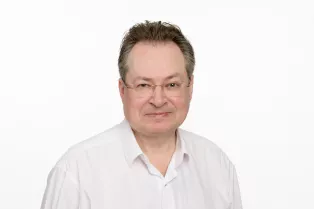What does a grant of this size mean?
– Now we can finally get started and carry out the research we've been planning for a long time, says Björn Slaug, Associate Professor in Active and Healthy Ageing Research Group.
The project involves several co-applicants from both Susanne Iwarsson's and Steven Schmidt's research groups. Several of them are members of the profile area Proactive Ageing, including senior lecturer Gabriella Scaramuzzino at the School of Social Work, who received 2.5 million Swedish kronor in the same call from Forte. Co-researchers in this project are Giedre Gefenaite, Marianne Granbom, Oskar Jonsson and Steven Schmidt, as well as Carlos Chiatti from Italy and Charles Musselwhite from Wales.
As the population ages, more and more people will live with functional limitations and many as single people. It poses challenges for community planners, housing developers and decision-makers to develop sustainable strategies for neighborhood and living environments that support the elderly physically, socially and with access to services, health care and other facilities.
Charts savings in healthcare
The research project examines the geographical distribution and concentration of households with elderly people and community services, as well as available communications and transport. Furthermore, the researchers will look at what obstacles, needs and wishes older people have regarding their living environment, in order to continue being active and involved in society. In addition, the consequences of savings in healthcare must be mapped. The project builds on already established collaborations with Swedish municipalities and is structured in six work packages over three years. The interdisciplinary research team has expertise in gerontology, public health, epidemiology, health economics and design. The project is an extension of the previous Forte-funded project Simul-Age and will use data partly from it, but also from Statistics Sweden, SCB, and municipalities.
– The project will support political decision-makers, urban planners, designers and housing developers to achieve the UN's goals for sustainable cities and communities, says Björn Slaug.
What exactly will the money go to?
– Most of it goes to the researchers' salaries of course, but also to data extraction, software and various communication activities, says Björn Slaug.
Second million contribution this year
Earlier in October, it became clear that CASE researchers Magnus Zingmark, Susanne Iwarsson and Marianne Granbom will also receive a million grant from Formas for their utilization project. Thus far this year, CASE has received close to 9.5 million Swedish kronor in new grants from various financiers.
But this week, information was also given about the rejection of applied for grants from the Swedish Research Council and the annual public call from Formas.

